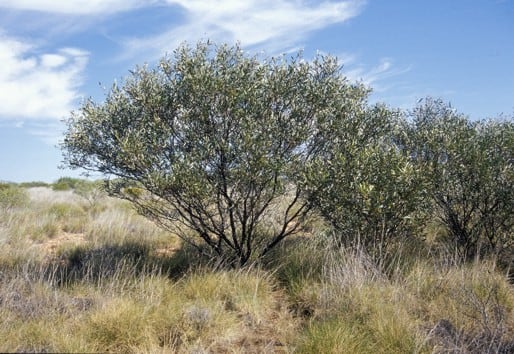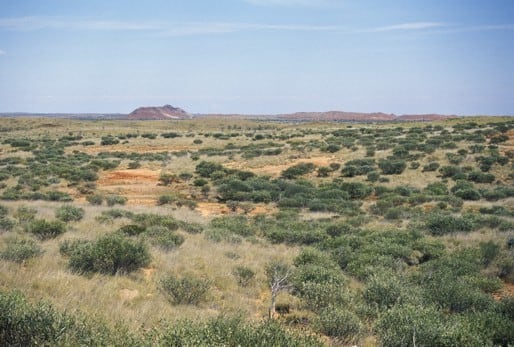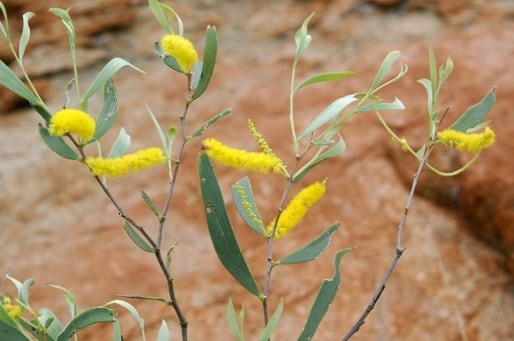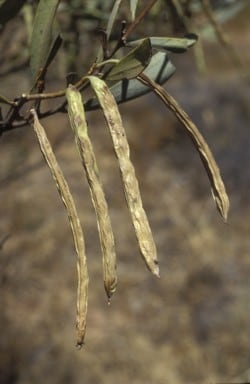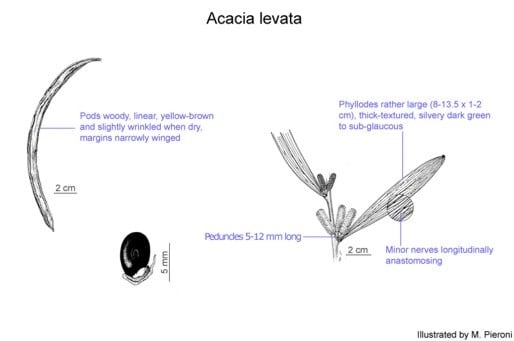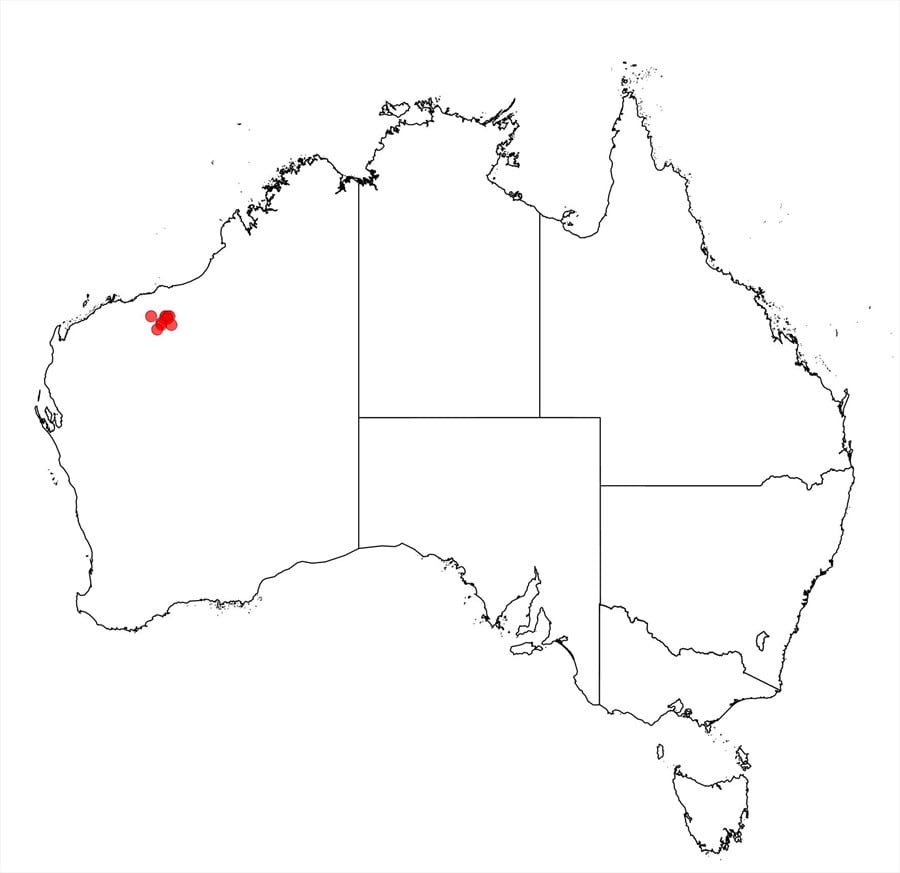Acacia levata R.S.Cowan & Maslin
WATTLE
Acacias of Australia
Common Name
Woodstock Wattle
Family
Fabaceae
Distribution
Restricted to a small area S and SSW of Marble Bar, north-western W.A. It is common in the places where it occurs, sometimes forming extensive thickets.
Description
Shrub 1–3 m high, spreading, multistemmed, oldest plants sometimes with a Snakewood growth form. Branchlets sometimes glabrous but normally sericeous at extremities and glabrescent. Phyllodes patent to slightly ascending, narrowly elliptic to oblong-elliptic, straight to shallowly curved, 8–13.5 cm long, 1–2 cm wide, obtuse to acute, thickly coriaceous, subrigid, minutely sericeous, dark green to sub-glaucous with a silvery sheen, with about 4–6 widely spaced, prominent main longitudinal nerves and longitudinally-anastomosing minor nerves between them; glands 1–3, with lowermost 1–4.5 mm above pulvinus. Inflorescences simple, 1 to several per axil; peduncles 5–12 mm long, glabrous or (especially in bud) appressed-hairy; spikes 20–25 mm long, 6 mm diam., dense, golden; bracteoles with a short stipe and ±triangular concave blade. Flowers 5‑merous; sepals 1/2–3/4-united; calyx tube glabrous. Pods pendent, linear, narrowly winged, not raised over or constricted between seeds, straight to slightly curved, to 15 cm long, 7–12 mm wide, woody, glabrous, drying yellowish brown and slightly wrinkled; margins with a narrow vertical winged. Seeds longitudinal, broadly elliptic to subcircular, 5–5.5 mm long, dull, brown; funicle ribbon-like; aril subterminal.
Phenology
Flowers May to possibly July.
Habitat
Grows with spinifex in gently undulating, low rocky hills (often associated with seasonally dry watercourses), on shallow sand, sandy loam or clay-loam (pH 7–8.5) over granite or quartz. Common associates are A. hilliana and A. stellaticeps.
Specimens
W.A.: Spear Hill, 63 km by road SW of Marble Bar, 17 Oct. 1983, P.Ryan s.n. (PERTH); 37.2 km S of turnoff to Marble Bar Pool on road to Wittenoom, L.Thomson LXT1158 (PERTH); 29.7 km ESE of Woodstock HS on road to Hillside, L.Thomson LXT1161 (PERTH).
Notes
Related to A. cuthbertsonii subsp. cuthbertsonii which is most readily distinguished by its generally smaller, more obviously hairy phyllodes with less evident nervation and sericeous, interrupted spikes, but also with different pods and seeds.
FOA Reference
Data derived from Flora of Australia Volumes 11A (2001), 11B (2001) and 12 (1998), products of ABRS, ©Commonwealth of Australia
Author
Minor edits by B.R.Maslin & J.Rogers
R.S.Cowan, B.R.Maslin
This identification key and fact sheets are available as a mobile application:
URL: https://apps.lucidcentral.org/wattle/
© Copyright 2018. All rights reserved.
